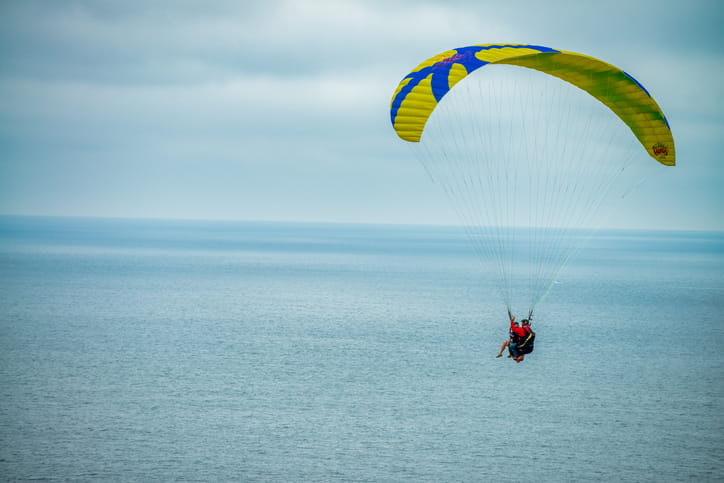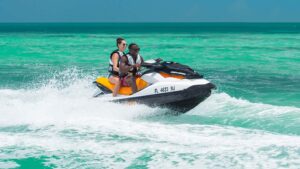Are you tired of shivering in the water or feeling restricted by an ill-fitting wetsuit? Finding the perfect wetsuit can be a daunting task, especially with the myriad of options available on the market today. A well-chosen wetsuit not only enhances your comfort and performance in the water but also extends your time enjoying your favorite aquatic activities. This wetsuit buying guide will help you navigate the crucial factors to consider—such as thickness, material, and fit—to ensure you make an informed decision. We’ll explore the different types of wetsuits available, offer tips on sizing, and discuss key features that can make all the difference in your underwater adventures. By the end of this guide, you’ll be equipped with the knowledge to select the ideal wetsuit that meets your specific needs, ensuring that every dive, surf, or swim is as enjoyable as possible.
Understanding Wetsuit Types
Choosing the right wetsuit begins with understanding the various types available. Each type serves different water activities and conditions.
Full Wetsuits
Full wetsuits cover your entire body from neck to ankles and wrists, providing maximum warmth. Ideal for cold water conditions, they come in various thicknesses.
Spring Wetsuits
Spring wetsuits, often called shorties, feature short sleeves and legs. They are perfect for warmer waters, offering flexibility and comfort.
Long John/Jane Wetsuits
These sleeveless wetsuits provide full leg coverage, allowing greater arm mobility, making them suitable for paddling sports.
Short John/Jane Wetsuits
Short John/Jane wetsuits are sleeveless with short legs, ideal for warm water activities where flexibility is key.
Wetsuit Thickness and Temperature Guide
The wetsuit’s thickness determines its thermal protection. Here’s a guide to choosing the right thickness based on water temperature:
- 2mm – 3mm: Suitable for water temperatures above 22°C (72°F).
- 3mm – 4mm: Ideal for 18°C – 22°C (64°F – 72°F).
- 4mm – 5mm: Best for 10°C – 18°C (50°F – 64°F).
- 5mm – 6mm: Suitable for 5°C – 10°C (41°F – 50°F).
- 6mm+: Designed for temperatures below 5°C (41°F).
Wetsuit Materials
The material of a wetsuit affects its flexibility, durability, and comfort.
Neoprene
Neoprene is the most common material, offering excellent insulation and flexibility. It comes in various grades, with higher grades providing better stretch and warmth.
Polyester and Nylon
These materials often line the neoprene, enhancing durability and comfort. They also aid in quick drying.
Yamamoto Neoprene
This high-end neoprene is known for its superior flexibility and lightweight properties, often used in premium wetsuits.
Wetsuit Fit and Sizing
A proper fit is crucial for warmth and comfort. Consider these tips when selecting a wetsuit size:
- Ensure a snug fit without restricting movement.
- Check the fit around the neck, wrists, and ankles to prevent water entry.
- Refer to the manufacturer’s size chart and consider trying on different brands for the best fit.
Wetsuit Features to Consider
Modern wetsuits come with various features enhancing performance and comfort.
Seam Construction
Seam types impact the wetsuit’s durability and water resistance.
- Flatlock: Comfortable and breathable, suitable for warm waters.
- Sealed (Glued and Blindstitched): Provides better water resistance, ideal for colder conditions.
- Taped: Offers maximum water resistance and durability, often found in high-end wetsuits.
Zipper Types
Zipper placement affects entry ease and water resistance.
- Back Zip: Traditional and easy to put on, though may allow more water entry.
- Chest Zip: Offers better water resistance and flexibility.
- Zip-Free: Provides maximum flexibility and water resistance, though can be challenging to put on.
Thermal Linings
Thermal linings enhance warmth and comfort. Look for quick-dry linings to reduce drying time between sessions.
Caring for Your Wetsuit
Proper care extends the life of your wetsuit, maintaining its performance over time.
Rinsing
Rinse your wetsuit with fresh water after each use to remove salt, sand, and chlorine, which can degrade materials.
Drying
Hang your wetsuit in a shaded area to dry. Avoid direct sunlight, which can damage neoprene.
Storage
Store your wetsuit flat or on a wide hanger to prevent creases and maintain its shape.
Environmental Considerations
Sustainability is increasingly important in wetsuit manufacturing. Look for brands using eco-friendly materials and processes.
Recycled Neoprene
Some manufacturers use recycled neoprene, reducing environmental impact.
Water-Based Adhesives
Opt for wetsuits using water-based adhesives, which are less harmful to the environment compared to solvent-based options.
Budgeting for a Wetsuit
Wetsuit prices vary widely based on materials, features, and brand reputation. Here’s how to make the most of your budget:
- Entry-Level: Basic wetsuits with essential features, suitable for beginners.
- Mid-Range: Offer a balance of performance and cost, ideal for regular users.
- High-End: Premium materials and features, perfect for serious enthusiasts seeking top performance.
Conclusion
Investing in the right wetsuit enhances your water experience, providing comfort and protection. Consider your activity, water conditions, and personal preferences when selecting a wetsuit. With proper care, your wetsuit will serve you well for many seasons, making it a worthwhile addition to your gear collection.





